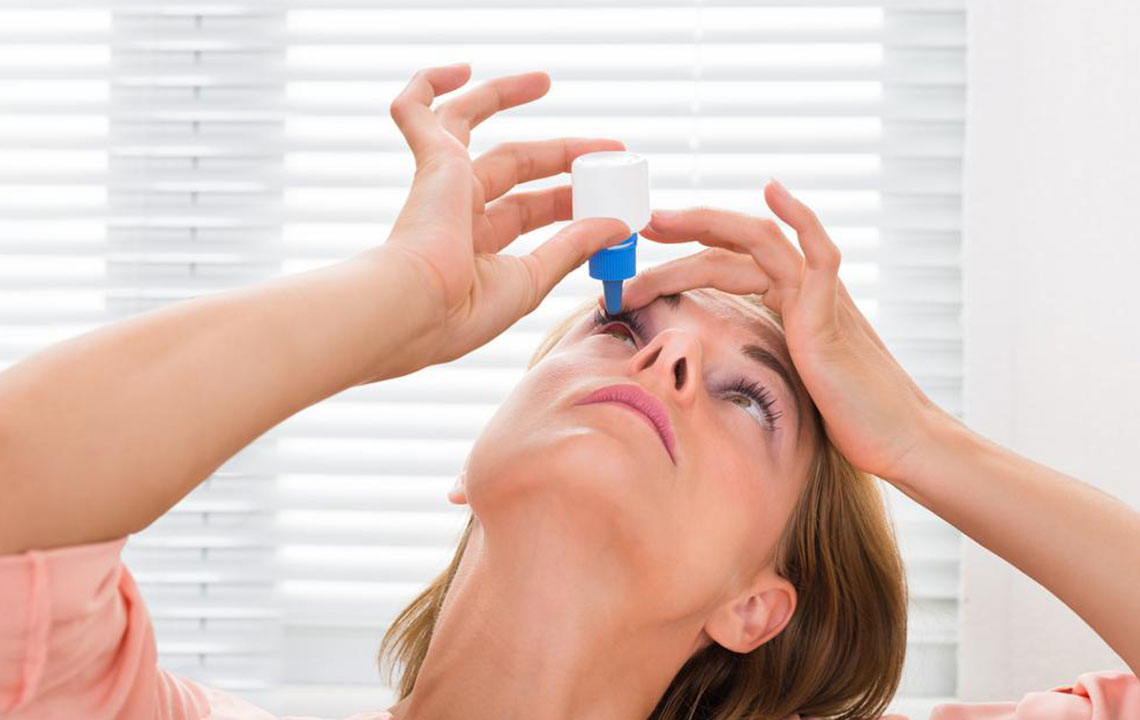Dry Eye Disease – Symptoms, Causes, Diagnosis, and Treatment
Chronic dry eye disease is a condition in which the eyes do not produce adequate tears to facilitate lubrication in the eyes. This condition is also known as dry eye syndrome, chronic dry eye syndrome, and Keratoconjunctivitis sicca. Unfortunately, there is no permanent cure for the dry eye disease, but it can be treated.
Symptoms of dry eye disease
People develop one or more of the following symptoms, especially when their eyes are exposed to the computer screen for a long time or when they’re enclosed in an air-conditioned or an air compressed environment. In almost all cases, both eyes show up these symptoms.

- Stinging, burning, and scratching sensation in the eyes
- Watery eyes
- Sensitivity to light
- Redness in the eyes
- A sticky mucus formation in and around the eyes
- Blurred vision
- Hampered nighttime driving
- Difficulty in wearing contact lenses
If the symptoms of dry eye disease persist, it’s best to get advice from an ophthalmologist at the earliest.
Causes of dry eye disease
Tears are a mix of water, fatty oils, and mucus. This mixture not only helps to keep the eye surface smooth but also keeps the eyes free from infection. The main cause for dry eye disease is usually a decrease in production, increased evaporation of tears, or imbalance in the composition of the tears.
Decrease in tear production
Medically referred to as Keratoconjunctivitis sicca, the common reasons for decreased tear production include:
- Aging
- Damage to the tear glands due to inflammation or exposure to radiation
- Medical conditions like diabetes, lupus, thyroid disorders, vitamin A deficiency, rheumatoid arthritis, scleroderma, and Sjogren’s syndrome
- Medications like decongestants, antihistamines, antidepressants, and drugs that are used to treat high blood pressure, acne, and birth control pills
- Laser eye surgery can temporarily cause dry eyes
Increased tear evaporation
Your eyes may be producing adequate tears, but if the tear evaporation rate is high, dry eye syndrome can start manifesting. Increased tear evaporation is caused due to the following:
- Not blinking often. This mostly happens when you’re glued to the computer monitors for long durations or when you are reading with total concentration.
- Wind, smoke, and dry air.
- Eyelid problems, like ectropion (out-turning of the eyelids) and entropion (in -turning of the eyelids).
Imbalance in tear composition
As we know, the tear film is composed of 3 layers—oil, water, and mucus. Complications in any of these layers can lead to dry eyes. The film of oil, produced by small glands located at the edge of the eyelids, can sometimes get clogged. As a result, there is an imbalance in the tear composition which leads to dry eyes.
Who is at risk?
Tear glands function at a reduced capacity when your age crosses 50. There is a significant reduction in tear production which is one of the main reasons. Women are at an increased risk of dry eye disease, due to lack of tears. Hormonal changes during pregnancy and menopause are some attributable causes. Vitamin A deficiency and wearing contact lenses also puts you at risk. If left untreated, dry eyes can lead to complications like an increased vulnerability to infections, damaged eye surface, and hampering the performance of your daily activities.
Diagnostic procedures for dry eye disease
Identifying the cause of dry eyes is important. An ophthalmologist would conduct a comprehensive eye examination to find the actual cause for dry eyes. By employing the Schirmer test, the volume of tears is measured. Blotting paper strips are placed under the lower eyelids, and the extent to which the strips get soaked is an indicator of the tear volume. The tests are then carried out to determine the quality of tears. Special dyes are used in eyedrops to determine the surface condition of the eyes. Staining patterns on the cornea are observed and the time is measured for tears to get evaporated. These conclusive tests help the doctor to pinpoint the exact cause of the dry eye disease.
Treatment options for dry eye disease
Mild symptoms can be easily treated using over-the-counter lubricating drops. Treatment options focus on identifying the underlying cause and reversing the effect, without causing any side effects. Treatments include improving tear quality and increasing tear volume.
Medications
Prescription drugs that are used to treat dry eyes include—antibiotics to reduce eye inflammation, eye drops with cyclosporine to control corneal inflammation, eye inserts to mimic artificial tears, and tear stimulating drugs. If none of the prescription drugs work, eyedrops made from your own blood may be used. Other procedures include eyelid massage, light therapy, using special contact lenses, and closing tear ducts to prevent tear loss.
Prevention is better than cure. Certain lifestyle changes can help to prevent dry eyes. These include avoiding staying in dry and smoky environments for a long time, keeping the computer screen below eye level, taking breaks during long tasks, and wearing protective eyewear.
If you’re already suffering from dry eyes, keep your eyes well lubricated using eyedrops/artificial tears
Dry eye disease is a common condition. Ensure that you keep your eyes well lubricated so that the symptoms do not become chronic.

